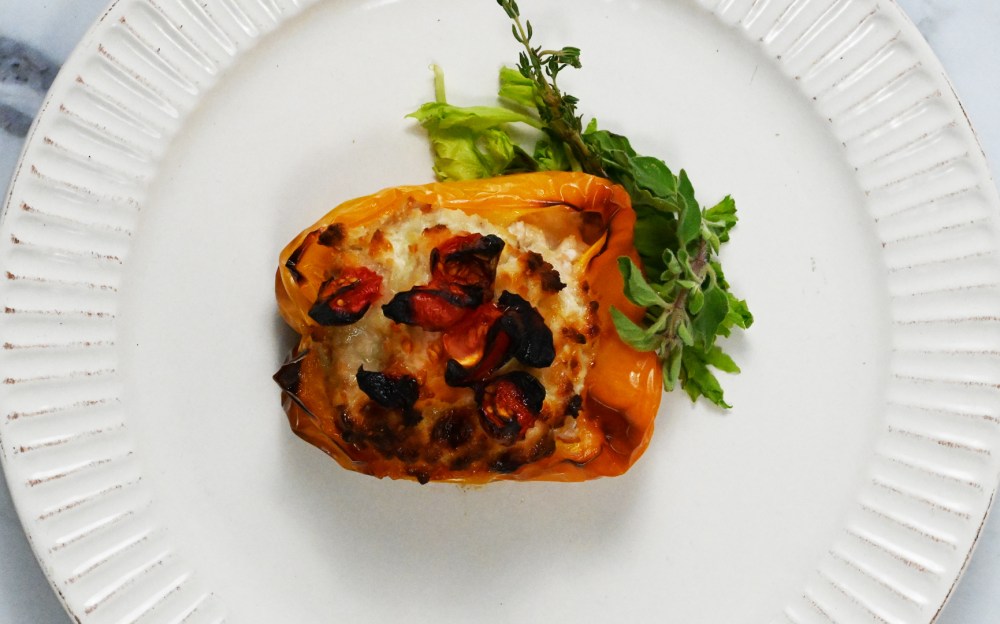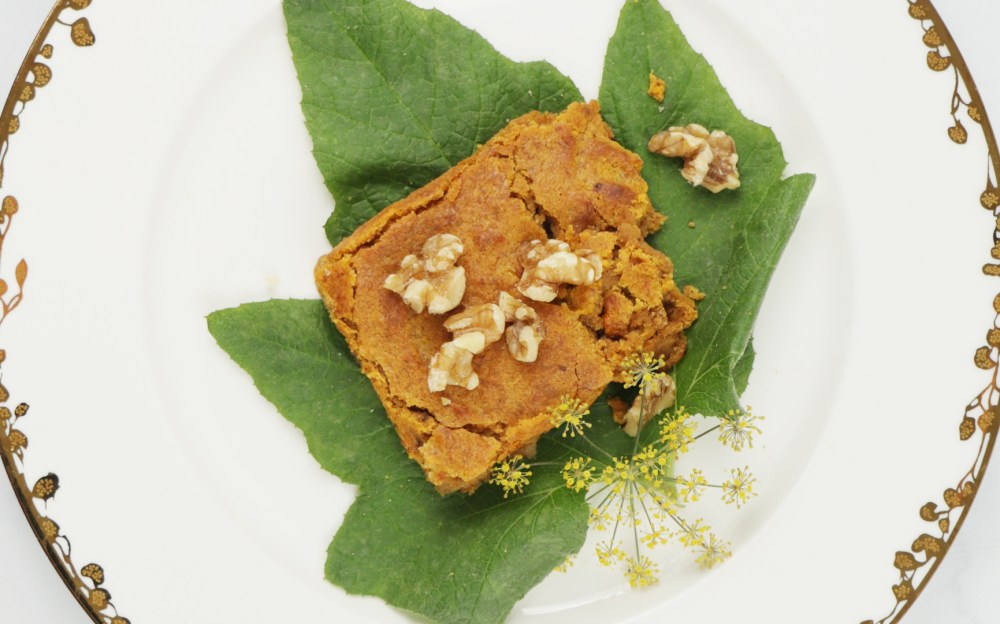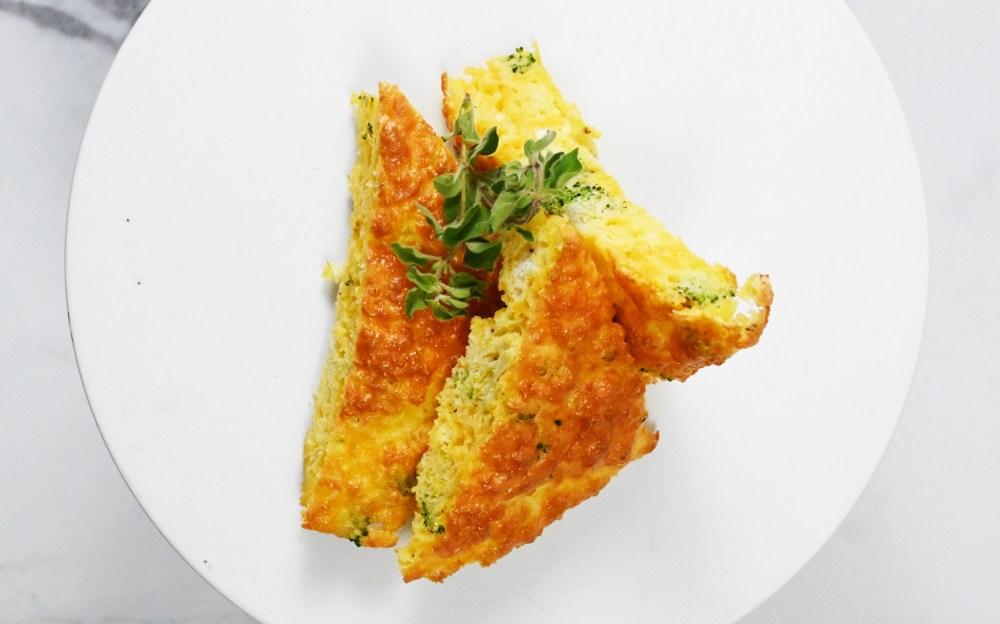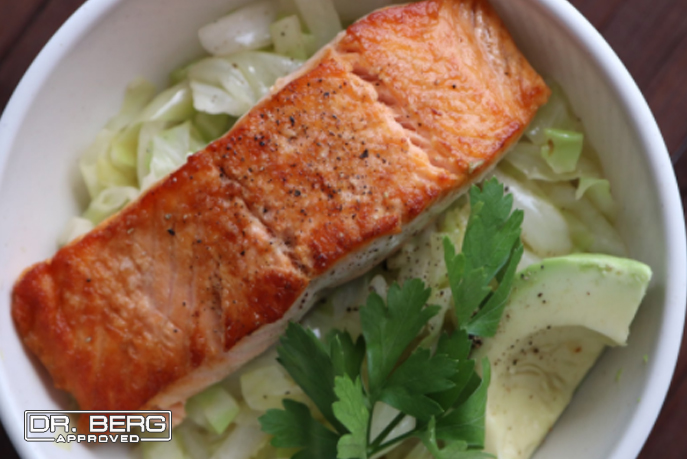Instructions
- Heat 1 tablespoon avocado oil in large skillet over medium heat.1 tablespoon avocado oil
- Pat dry 3 ounces salmon filet with paper towel.3 ounces salmon filet
- Place salmon into skillet skin-side down and cook for 4 to 5 minutes. Flip and cook for another 3 to 4 minutes until fully cooked. Set aside and keep warm.
- Add ½ tablespoon coconut oil to same skillet on medium heat.½ tablespoon coconut oil
- Add 1½ cups cabbage and ¼ cup white onion and cook for 5 minutes, stirring occasionally.1½ cups cabbage, ¼ cup white onion
- Reduce heat to low and add 1 tablespoon butter. Cook for 2 to 3 more minutes.1 tablespoon butter
- Plate cabbage and onions mix, top with salmon, add ½ avocado, and season with Salt and pepper to taste.½ avocado, Salt and pepper to taste
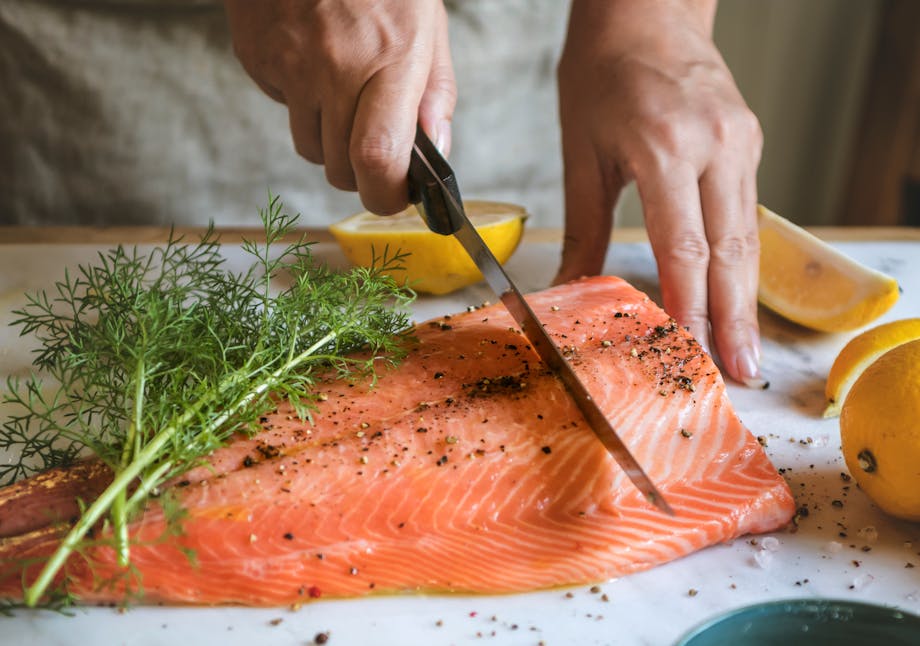
This Keto Cabbage and Salmon Bowl is a delicious and nutritious meal perfect for anyone looking for a simple but satisfying low-carb dish.
Learn how to make this quick and easy recipe and discover the impressive health benefits of eating salmon and cabbage.
Why you’ll love this keto-friendly recipe
This Simple Keto Cabbage and Salmon Bowl is a great choice for anyone on a ketogenic diet who is craving a meal that’s comforting, nutritious, and delicious.
Packed with healthy fats from the salmon and avocado, this simple Keto Salmon Bowl recipe keeps you feeling full and in fat-burning mode.
What’s more, cabbage offers various essential nutrients, fiber, and antioxidants, which support overall health while keeping the net carb count low.
Net carbs are calculated by subtracting fiber from the total carbohydrate count, as fiber isn’t digested and doesn’t affect blood sugar levels. With 17.9 carbohydrates and 8.8 grams of fiber, this dish contains just nine grams of net carbs per serving, making it perfect for keto.
The combination of savory salmon, buttery cabbage, and creamy avocado creates a delightful dish that is incredibly convenient to make and ready in under 25 minutes.

Health benefits of cabbage
Cabbage is a versatile cruciferous vegetable that’s budget-friendly and offers various health benefits.
It’s an excellent source of vitamin C, providing over 50 percent of the recommended daily intake for most adults in just one cup.
Cabbage is also packed with dietary fiber and vitamin K, essential for proper blood clotting and bone metabolism. It’s also a significant source of folate, which plays a crucial role in DNA synthesis and repair.
In addition, cabbage contains high concentrations of sulfur-containing compounds, such as sulforaphane, which has been studied for its potential cancer-fighting properties.
A study published in Evidence-Based Complementary and Alternative Medicine found that “cabbage has pharmacological activities against various diseases, including liver cirrhosis, hepatitis, cancer, and hypocholesterolemia.”

Health benefits of salmon
Salmon is a nutritional powerhouse that provides numerous health advantages.
It’s one of the best dietary sources of the omega-3 fatty acids eicosapentaenoic acid (EPA) and docosahexaenoic acid (DHA), which offer potent anti-inflammatory, cardiovascular, and neurological benefits.
Salmon is also one of the few dietary sources of vitamin D3, a highly beneficial nutrient critical for bone health, immune function, and mood regulation.
In addition, salmon contains significant amounts of selenium. This trace mineral is known for its potent antioxidant properties, which help protect cells from oxidative stress and inflammation.
It also plays a crucial role in detoxification, supporting the body’s ability to eliminate heavy metals, including mercury, a common contaminant found in large predatory fish species.

How to choose the right salmon
When choosing salmon, opt for wild-caught over farmed-raised salmon whenever possible.
“Farmed salmon can contain up to seven times more toxins, including polychlorinated biphenyls and dioxins, than wild-caught options,” explains Dr. Berg, “Farmed salmon are often fed an unnatural diet of genetically modified (GMO) grains and low-quality animal byproducts.”
Wild-caught fish offers the highest nutritional value while minimizing your potential exposure to environmental toxins, heavy metals, and synthetic growth promoters.
According to data published in The Journal of Steroid Biochemistry and Molecular Biology, wild-caught salmon contained about four times the amount of vitamin D3 compared to farm-raised salmon.
If you don’t have access to wild-caught salmon, look for organic ocean-raised salmon. Organic fish farms are prohibited from exposing fish to chemicals or dyes and must provide non-GMO feed without growth hormones and antibiotics.

Tips for cooking salmon
Many people shy away from salmon recipes because they find salmon tricky to prepare.
However, with a few simple techniques, you’ll get great results every time:
Let refrigerated salmon sit at room temperature for 15 to 20 minutes before cooking to promote even cooking and browning.
Ensure the pan is preheated and the oil is hot before adding the salmon to get a nice sear, which locks in flavor and moisture.
When searing salmon, look at its sides to gauge when to flip it. When the filet’s color turns from dark pink to light pink halfway up or more, it’s ready to be flipped.
Avoid overcrowding the pan, which will cause the salmon to steam rather than brown.
Squeeze lemon juice over your salmon while it’s in the pan. The lemon juice’s acidity will complement the salmon’s richness and create a delicious, well-balanced dish.
Let the salmon rest for 3 to 5 minutes before serving to allow the juices to redistribute.

Final thoughts
This Cabbage and Salmon Bowl is a delicious and nutritious keto-friendly recipe that will keep you feeling full and satisfied.
The combination of salmon and cabbage offers omega-3 fatty acids, protein, fiber, vitamin D3, and antioxidants. These nutrients help support heart health, brain function, digestion, and the detoxification of heavy metals.
The best salmon is wild-caught as it contains more nutrients and is less likely to be contaminated with artificial dyes, synthetic growth promoters, or GMO residues than farmed salmon.
FAQ
1. How many carbs are in this recipe?
Each serving of this Salmon Cabbage Bowl provides 17.9 grams of total carbohydrates and 8.8 grams of fiber, leaving a net carb count of 9.1 grams per bowl.
2. Is salmon high in carbs?
No, salmon is naturally carb-free, making it an excellent source of healthy fat and protein for those following a ketogenic diet.
3. Is salmon high in mercury?
Wild-caught salmon tends to be low in mercury as it can roam freely. In contrast, farmed fish are raised in large aquatic enclosures, which are at higher risk of mercury pollution.
Additionally, wild-caught salmon is a rich source of selenium, a trace mineral that can bind to and help eliminate mercury, making it a safer choice to minimize heavy metal exposure.
4. Can salmon help you lose weight?
Yes, salmon can help you lose weight.
Salmon offers plenty of protein and healthy omega-3 fats that support weight loss by stabilizing blood sugar levels, supporting metabolic health, and increasing satiety, which helps prevent overeating and snacking.
5. How do I cook salmon?
Salmon is a versatile fish that can be pan-seared, roasted, grilled, poached, and smoked.
It can also be enjoyed raw if purchased from a reputable fishmonger as sushi-grade salmon, which means freshly caught salmon has been frozen to kill any potential parasites.
6. Can I have cabbage on keto?
With around three grams of net carbs per cup, cabbage is an excellent keto-friendly vegetable. It’s a great way to add low-carb volume, fiber, and nutrients to your favorite keto meals.
7. Does cabbage break ketosis?
No, eating cabbage won’t disrupt ketosis as it’s low in net carbs. However, cabbage does contain some carbs, and consuming excessive amounts may exceed daily net carb limits and interfere with fat-burning.
8. Can I have soy sauce on keto?
While some soy sauce products are low in carbs, many contain brown sugar, and almost all are made with genetically modified (GMO) soy.
It’s recommended to use coconut aminos as a keto-friendly, low-carb alternative to salty soy sauce. It has a similar savory, umami flavor profile without the added carbs and GMOs.
9. Can I have poke bowls on keto?
Traditional poke bowls are served with cooked rice, making them unsuitable for keto dieters. However, you can use riced cauliflower as a base to make delicious low-carb salmon rice bowls.


